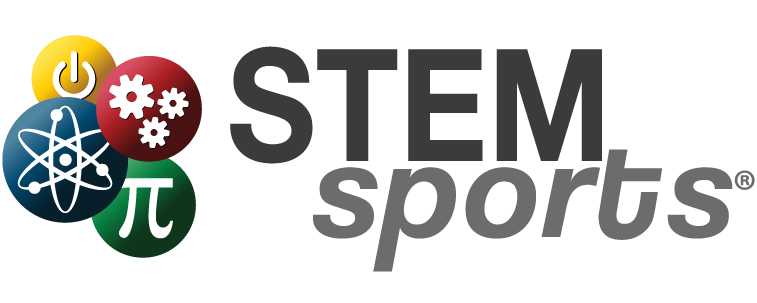The Value of Sports Statistics in STEM Education
Using sports statistics to facilitate STEM learning can be a highly effective and engaging way to connect core STEM concepts to real-world events and situations. This approach to education offers practical, relatable situations for students to explore – making complex STEM subjects more approachable. This unique approach to education also promotes engagement from a wider variety of people. Using real-world sports examples in education helps to engage left and right-brained learners – making it an effective option for educators trying to facilitate STEM in their classrooms. This article talks about how sports statistics can be used as a STEM learning tool and why this is an effective learning method for students of all ages.
Sports Statistics and Math Skills
Sports statistics provide an excellent platform for enhancing skills with numbers and math. Below are five of the many ways sports can be used to help students improve their math literacy through real-world applications.
- Data Analysis: Analyzing sports statistics involves dealing with large datasets containing numbers representing player performances, team statistics, and game outcomes. Students can practice data organization and analysis, using various mathematical techniques like averages, percentages, and correlations.
- Probability and Predictions: Students can calculate the likelihood of certain events occurring during a game, such as the probability of a player making a free throw or hitting a home run. They can also use historical data to make predictions for future games based on team and player performances.
- Graphs and Visualization: Creating graphs and visual representations of sports data is a common practice in sports statistics. Students can learn how to plot and interpret data on bar charts, line graphs, scatter plots, and histograms, helping them develop a better understanding of numerical patterns and trends.
- Fantasy Sports and Budgeting: Fantasy sports games involve building virtual teams using real players’ statistics while staying within a budget – the most popular being Fantasy Football. Students can use their math skills to optimize team selections, calculate player values based on performance, and manage their budgets effectively to compete against others.
- Comparing and Contrasting: Sports statistics allow students to compare players, teams, and seasons to identify patterns and make informed judgments about individual and team success. Students can use ratios and proportions to evaluate the relative strengths and weaknesses of different players or teams.
Emphasizing the Scientific Method with Sports Statistics
The scientific method is a key part of early education. Sports statistics lessons are an effective way to help students grasp and apply the scientific method. One way to ensure students are getting this benefit during their lesson is to highlight the points in the list below and call out these observations to students as needed.
- Real-life Application: Sports statistics provide real-world context for students to apply scientific principles and methods. By analyzing data from sports, students can see how the scientific method is not limited to the classroom and has connections to everyday life.
- Data Collection: Applying the scientific method starts with data collection. Sports statistics offer real-world data that is easily accessible and can be used for further analysis. Students can easily find and utilize data on players, teams, and leagues.
- Observation and Formulation of Questions: In the scientific method, the first step is to observe an event and ask relevant questions relating to the event. Sports statistics allow students to observe trends and patterns, which can prompt them to ask questions about player performance, team dynamics, or game strategies.
- Hypothesis Formulation: A hypothesis is an educated guess about the relationship between variables. With sports statistics, students can formulate hypotheses about factors that might influence the outcome of a game, such as the impact of weather conditions or the effect of player injuries on team performance.
- Experimentation and Analysis: Students can conduct statistical tests to validate or refute their hypotheses. For example, they can use regression analysis to determine the relationship between a player’s performance and the team’s success.
- Critical Thinking: Interpreting sports statistics requires critical thinking skills. By using real world sports statistics to improve STEM literacy, students are exercising this key 21st century skill.
- Drawing Conclusions: Sports statistics help students analyze the data, interpret the results, and draw conclusions about the factors that contribute to success or failure. This skill is easily translatable to other areas of STEM and future careers.
How to Incorporate Sports Statistics into a STEM Lesson Plan
It can be beneficial to find new, innovative ways to facilitate STEM curricula. This change in approach leads to increased student engagement and increases the probability of getting all students engaged, regardless of their interests. Below is a list of ways educators and school administrators can incorporate sports statistics into their STEM curricula plans.
- Follow a Sport Season from Start to Finish: Assign each student a team in a sports league, such as the MLB, and have them act as the statistician for the season. Students can review and use the data to provide predictions and player level insights.
- March Madness: Students can create their own brackets predicting who they think will win the tournament. Educators should encourage students to evaluate student data to inform their bracket. Then, they can follow their predicted winning team through the tournament to make predictions and pull team and player statistics.
- Statisticians for the School Sports Team: Whether it is the volleyball, basketball, or football team, going to the local school teams games is a great opportunity to turn students into sports statisticians. Students can collect data in real time and analyze it afterward to create player and team insights.
- STEM Sports®: STEM Sports® is an education company that provides STEM curriculum for K-8 students. Each STEM Sports® kit uses sports as a way to facilitate STEM lessons. Through hands-on lessons that connect to real-world examples, students improve their STEM literacy and get insight into STEM Jobs in Sports.
Value at All Ages
Regardless of age, it is proven that real-world, hands-on lessons have a higher rate of student retention and comprehension. By using sports to facilitate STEM lessons, students have the opportunity to see what they are learning connects to the world around them. It also helps to answer the question of why what they are learning is important. Whether it is primary or lessons, using sports can enhance STEM learning to make classroom lesson plans fun. If you are interested in learning more about STEM Sports® and how it can help educators seamlessly integrate sports statistic lessons into the classroom, click here to explore the current curricula offerings.

